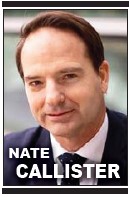Nate Callister
Following the end of the global pandemic and amid a steady diet of Fed interest rate hikes, businesses are reevaluating their financial direction and priorities to adjust to a “new normal.” For months, economists and news reports have alluded to a looming economic downturn.
With a potential economic slowdown on the horizon, determining the right next steps can be difficult, especially for businesses that haven’t seen any material changes to key economic indicators like sales revenue and{mprestriction ids="1,3"} profit margins.
Despite the dark economic clouds on the horizon, the second half of 2023 may also present unexpected silver linings and growth opportunities. The following three financial management preparation “must-haves” can help Utah companies not only survive the storm, but unearth new green shoots to thrive in 2024 and beyond.
1. Maintain liquidity. Business owners know maintaining the right level of liquidity is always a priority. However, balancing working capital with cash reserves can be challenging. Liquidity can provide insulation during times of stress and help prevent businesses from divesting assets. Yet too much liquidity can indicate resources are not being invested in growth appropriately.
So, how should businesses manage cash flow with an economic downturn in the forecast?
Companies looking to preserve and increase their liquidity could also seek additional lending options such as asset-based lending (ABL). ABL allows businesses to leverage their assets during economic and cyclical cycles to increase borrowing capacity, creating flexibility when pursuing business goals.
At the same time, companies with excess liquidity should consider reducing debt. The current interest rate environment makes debt much more expensive today than it was two years ago. It also makes recognizing opportunities for increased efficiency more important than ever, with an unwavering focus on achieving long-term business goals.
Maintaining adequate liquidity is paramount to capitalize on new growth opportunities such as acquisitions and bringing new products or services to market.
2. Create efficiencies to mitigate rising rates. In the past 14 months, the Federal Reserve has increased borrowing rates 10 times. The U.S. economy has not seen interest rates hikes of this magnitude since the 1980s. And while the intention for these increases has been to curb inflation, it has also given businesses the opportunity to rethink their strategy.
The impacts of rising rates can be detrimental to profitability. To counteract those effects, look for ways to create operational efficiencies.
As the global supply chain returns to pre-pandemic volume and price levels, over-inventoried companies can leverage supply chain finance programs to offset longer inventory hold times with preferred supplier terms by improving working capital and offsetting some of the carry costs associated with increased interest rates. Companies with the ability to apply automation may also see benefit in this environment. Businesses that can improve efficiency may be in the position to earn additional revenue at better margins.
3. Know your horizon. Maintaining perspective on where a business is, without losing sight of where it hopes to be, is an ever-present challenge. In 1999, The Alchemy of Growth by Mehrdad Baghai, Steven Coley and David White featured the “three horizons” framework, providing companies with a structure to assess and manage their current performance while planning for future opportunities. Each horizon identifies a different stage within the S Curve of the business cycle and correlating goals:
Horizon 1: Maintain and defend core business.
Horizon 2: Nurture emerging business.
Horizon 3: Create genuinely new business.
“Knowing your horizon” means aligning your priorities and practices to grow your business in the best way possible. Companies that understand their horizon are better positioned to act when they see an opportunity that could enhance their business because they are more aware of the potential value offered.
With so much economic uncertainty, businesses are often too eager — or too hesitant — to act when opportunities present themselves. As we enter the second half of 2023, businesses that can identify their horizon, and allow that knowledge to help shape their decision-making, will be better at differentiating between “dead-end” opportunities and beneficial opportunities.
Since the beginning of 2020, Utah companies have undergone a series of stress tests. Global pandemic, geopolitical uncertainty and supply chain constraints have overhauled modern-day business planning. As companies face the second half of 2023, there are certain to be challenges. However, companies that remain vigilant about liquidity, recognize the correlation between efficiency and interest rates, and understand their business horizon will find opportunities to thrive.
Nate Callister is the Wells Fargo Commercial Banking leader in Salt Lake City
Opinions expressed in this article are general and not intended to provide specific advice, recommendations for any individual or association, or an offer to extend credit. Contact your banker, attorney, accountant, or tax advisor with regard to your individual situation. The author’s opinions do not necessarily reflect those of Wells Fargo Commercial Banking or any other Wells Fargo entity.{/mprestriction}








